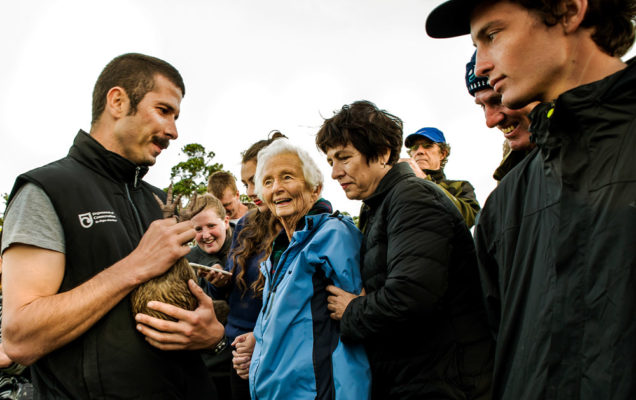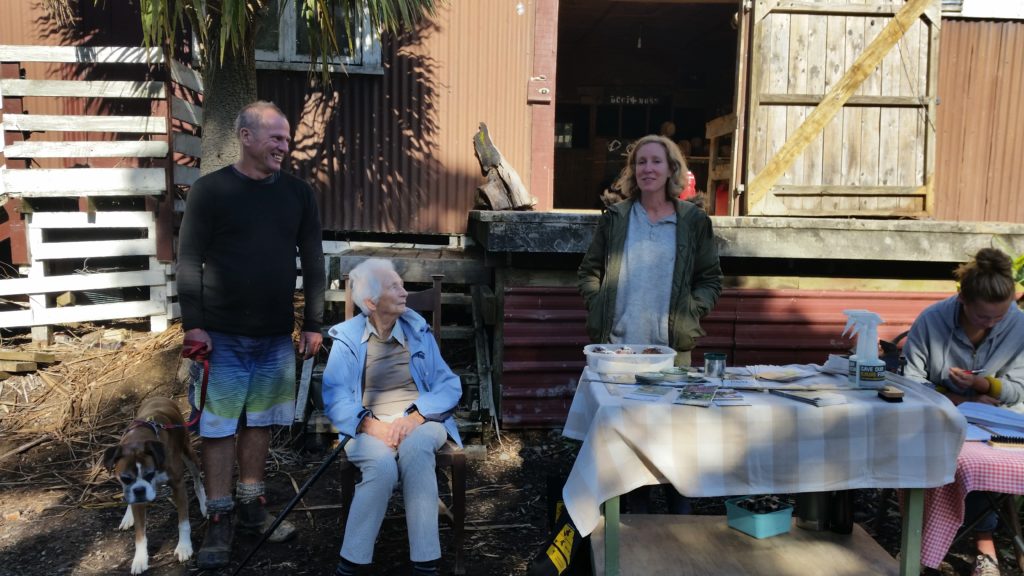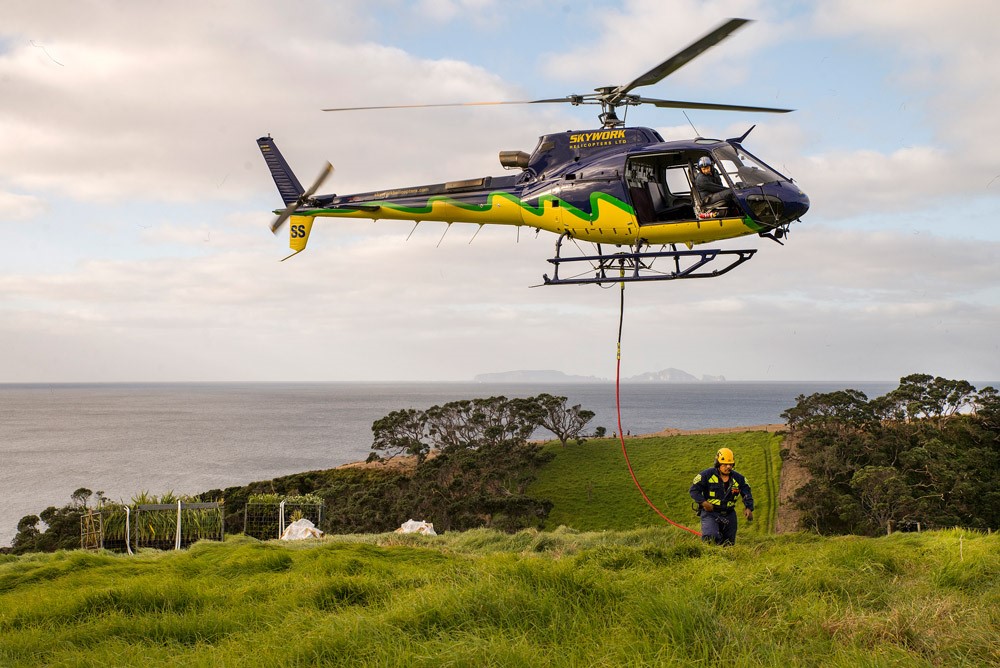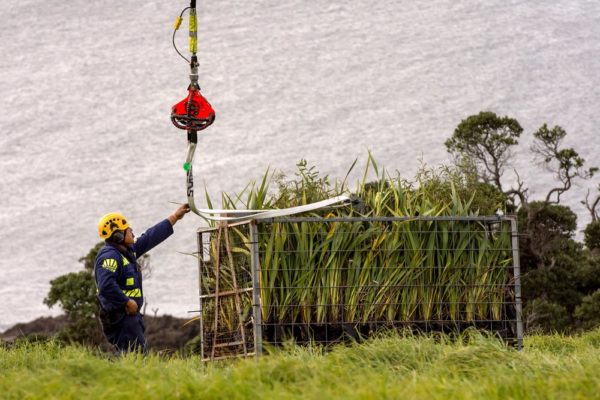When Guy Bowden’s parents bought a coastal farm at Matapouri, Northland back in the mid 1960s they immediately fenced off some of the bush. That was before the days of the QE II National Trust and land covenants.

Nowadays 94% of the 124 hectare family farm is in QE II covenant, made up of pohutukawa coastal forest and even some of the grassland. “Dad loved trees,” says Guy Bowden. “He used a tractor to clear the scrub but he and Mum were thought ‘odd’ back then for saving the bush. One of the neighbours said to him ‘this is what you need’ and offered him a box of matches!”
Needless to say, the matches were declined and the hard work continued. But it was poor farming country, running sheep and later a few cattle as well.
“It wasn’t,” Guy admits, “an economic farm.”
Pest control was a regular part of farm life from the beginning and now, the family reap the benefits.
“Dad might shoot 20 possums in a night but now I might only get half a dozen in a year,” Guy says. “We’ve seen quite a significant increase in the number of birds. The wood pigeons are almost a nuisance but people must learn to share.”
Guy’s father died back in 1980, but his mother, now 89, still lives on the property.

“She spent her lifetime breaking in an uneconomic farm and now she’s just delighted with what’s happening with the birdlife.”
Guy and his wife Sandy have run a native plant nursery from the farm since 1995. Both the farm and nursery are named ‘Tawapou’, after a rare coastal tree that grows on the property.
“It’s a big berry tree that needs wood pigeons to distribute the seeds,” Guy explains. “I was brought up learning about native plants without realising it. On walks around the farm Mum and Dad would point out and name the trees, so I knew lots of native plants even before I started the nursery.”
While collecting seed for the nursery a couple of years ago, searching for a rare coastal manuka along Tawapou Farm’s prominent headland, Guy came across some burrows.
“They were grey-faced petrel burrows,” says Guy.
It was an exciting discovery and predator control was stepped up a notch to help protect the birds. Guy called in local bird enthusiast Hilton Ward and a motion-activated camera system was setup to monitor the burrows.
“We already paid a guy to do traps fortnightly on the farm for us. We had 40+ DOC 200 traps and some Timms and Steve Allen traps and we put out brodifacoum in bait stations twice a year at 50 metre intervals for rats,” Guy says. “We also did ground-based 1080 on the headland at the same 50 metre intervals. After pre-feeding, I put out 150kg of bait and retrieved about 55kg.”
That first breeding year was a huge success.
“There were 20 or more burrows and a number of petrel chicks fledged that first year. It was the first recorded fledging of grey-faced petrels in Northland for 80 years,” Guy says. “But last year was disastrous. Stoats found the burrows and we couldn’t control them. We managed to catch 5 but they got last year’s chicks just before they fledged. Stoats are the main enemy of the petrels. I was in tears when I saw the footage.”
Guy couldn’t watch the monitoring camera footage in full and still hasn’t watched it.
“This year we’re going to step up our game,” he says with determination. “The petrels are due back in April/May and we’re going to try and be ready. We’ve got 6 cameras out monitoring now and we’re going to look for a pattern of where the stoats are coming from. Hilton Ward has got a young girl helping who is such a keen birder and she’s amazing! She’s aged about 14 or 15 and she’s mapped all the petrel burrows. Rats can be controlled,” he says, “but without protection from stoats the petrels have zero chance!”
Last year leghold traps were used in nesting burrows and did catch some of the stoats. But it meant a lot of clambering on cliffs to monitor the traps and ensure the safety of the nocturnal petrels.

“This year we plan to stop the stoats getting there,” Guy says. “We’ve got to pick ourselves up and go kill the b*stards!”
Grey-faced petrels aren’t the only rare birds returning to Tawapou Farm’s pohutukawa forests. Kiwi have been a real success story in recent years.
“Six kiwi have been released here in 2 batches,” says Guy. “There are monitored kiwi being mapped where they’re going and we’re hearing unmonitored ones as well. We had about 350 people turn up to one kiwi release. It’s fantastic to draw awareness. ”
Local landowners are also understandably excited when one of the monitored kiwi is recorded visiting their own properties.
“There are a lot of life-stylers living in the area. We have dog kiwi-aversion training days at the farm. Aversion training isn’t foolproof, but the training days help to educate owners at the same time.”
The next training day is coming up soon on 25 March, with another planned for later in the year on 15 July.
“Tawapou Farm is a well-known local place. We hold trapping days here and 100 plus people turn up to learn about trapping. We’re also giving our woolshed to the local Landcare group for $1 per year to hold meetings, make and store trapboxes etc.”

Running a native plant nursery is also a good fit when it comes to providing plants for the property.
“We helicoptered 6500 plants to the headland and held a public open planting day,” Guy says. “Over 120 people turned up to help plant them.”
None of the neighbours are suggesting Guy’s family set a match to their scrub and forest nowadays.
“The tide has turned and people are very keen to plant natives. It’s a feel-good factor,” Guy says. “At the end of the planting day we put on a pretty good spread in the woolshed. I thanked everyone and said I hoped they would return next year and got a resounding ‘Yes!’”
Tawapou Farm may not be an economic farming unit, but Guy and his brothers and sisters have always been determined to save the property and continue their parents’ work.

“In the long term we want to re-vegetate the whole property, but we’re not rich,” he says. “We covenanted everything we could, both to protect it and to lower the costs of rates (which are high in the popular life-styler coastal setting). The QE II National Trust has been very good to us and their local rep has helped a lot. Now 94% of the farm is under covenant. But there’s kikuyu grass,” he adds, “which is very invasive. It grows like a vine!”
An extra incentive to get rid of the kikuyu, keep planting, keep predator numbers down and make the land safe for birdlife is the sanctuary that lies just across the water from Tawapou Farm.
The Poor Knights Islands are very near,” Guy explains, “And they’re fully protected. They’ve got amazing wildlife. We want to create a safe place on the mainland for any birds that come over. It’s a fantastic property,” he says, “But we can’t do it on our own. It’s a real community effort.”

